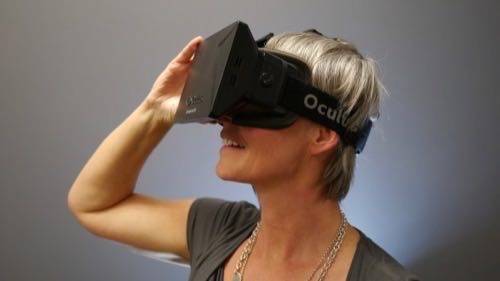
In the year since cinematic virtual reality startup Jaunt launched, the world of VR has once again turned upside down. There are new headsets, new industries interested and, finally, definite plans to release it to consumers. The race is on to determine which content will define the world’s first experiences with the medium.
Jaunt CEO Jens Christenson can’t help but get excited about all the activity and identify one of its greatest opportunities:
I think technology has gotten to the point [where] people are excited about it. They’re going to get the headsets, especially mobile headsets. The biggest overarching thing is just creating enough content so we can have what I call critical mass of content in 2015. So when people get their headsets, there is great content they can view, but also fresh content coming every day, every week, so they keep coming back.
At the South By Southwest festival, Christensen had a fresh reel of content to show me, including aerial shots of rock climbers and an on-stage view of a Paul McCartney concert. Jaunt’s custom camera captures 360 degrees of 3D video that pulls on the emotional strings that make virtual reality feel so real.
VR Films Are No Laughing Matter

It’s clear that Jaunt is beginning to experiment with new forms of video. Back when the company was still in stealth mode, its clips felt mostly like home movies—simple shots of a children’s choir, BMX bikers and a tranquil yard. There was one experimental scene from a horror film.
Today, the production value feels much higher. In one scene from “Other Space,” the upcoming Yahoo comedy by the creator of “Freaks and Geeks,” characters lobbed mildly humorous insults and got in my face while examining me aboard their spaceship.
See also: 6 Ways The HTC Vive Will Freak Out Virtual-Reality Geeks
This was the first comedy I’ve seen in virtual reality. While I don’t have great things to say about the script writing, it raised some interesting thoughts.

You know how people like to keep a little distance between themselves and other people or objects? Your desire for personal space in real life still exists in VR. But the scene didn’t ask me to laugh at some character on the screen getting poked and prodded—it asked me to laugh at myself. It was a conflicting feeling of discomfort and amusement.
Another clip, “Stress Level Zero,” is Jaunt’s first piece to feature computer-generated material. An animated alien in a spacesuit lands and begins performing a DJ set, while live-action FBI agents shout at it to freeze. The combination felt natural in VR.
Virtual Opportunity—And Competition
Jaunt plans to remain goggle agnostic, but its biggest boost may come from mobile headsets, which eliminates wires by using a phone as their screen.
“We’re very excited about the mobile solution,” Christensen said. “The thing that’s so great about mobile for us is, it plays video really well. It’s really not that suited for video games.”

That means less competition for eyeballs on the platform that could be the first VR experience for millions of people.
Films run just fine on headsets like Oculus Rift and Sony’s Project Morpheus, which have higher-quality screens, but they were born for gaming and need to be tethered to a computer. Samsung and Oculus’ Gear VR headset is made to be out in the world getting strapped onto as many heads as possible. Christensen said he is even excited about Cardboard, Google’s inexpensive headset that is literally made out of cardboard.
I agree with Christensen that it’s all about content now. Even today, you can have a great experience in VR whether you’re using Gear or HTC’s new Vive, which was the hit of the 2015 Game Developers Conference. Jaunt is under similar pressure. While it has the intellectual property rights to protect its camera, plus its editing and distribution software and apps, it is no longer the only company creating high-quality videos for VR.
See also: Samsung Is Getting Serious About Producing Its Own Virtual-Reality Videos
But Jaunt’s latest demos convinced me that its inventiveness could still give it the edge. The company provides evolving creation tools to artists and developers, and it’s clearly thinking hard about what VR cinema should feel like. Christensen’s team is also considering how to make watching VR videos more social, to beat back the feelings of isolation common in virtual reality environments.

The questions that remain for cinematic VR creators will take years to answer. But hopefully, when the first headsets emerge later this year, the industry will have a compelling start.
Camera photo and color shot of founders by Signe Brewster for ReadWrite; all others courtesy of Jaunt

















